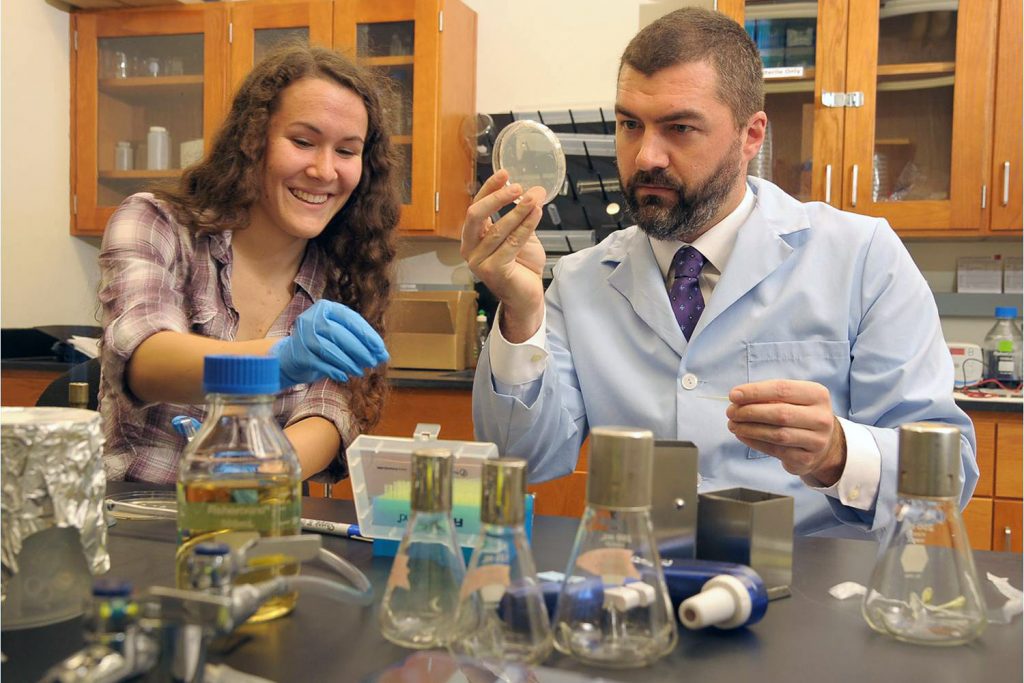Paul Dalhaimer, CBE assistant professor, has many strengths as a teacher and researcher, but he admits to one weakness.
“I grew up about two blocks away from Lake Michigan in Sheboygan, Wisconsin, and have fond memories of the shoreline–but I can’t fish,” Dalhaimer said. “It seems incredible to me that I went out only once on the lake in a boat to fish. The name ‘Sheboygan’ provided unending amusement for my fellow students in the wing of our freshman dorm in college.”
As a young student, he was always attracted to the mathematical underpinnings of engineering. He received his bachelor of science and doctoral degrees from the University of Pennsylvania, and did post-doc work at Yale University.
Dalhaimer joined the CBE faculty in August of 2009.
“I was drawn to the other faculty members when I joined the CBE department,” he said. “I also feel that we have excellent facilities here. I love the diversity of the research that is taking place in the Science and Engineering Research Facility (SERF) and our laboratory has benefitted tremendously from collaborations in that building.”
He and his research team are primarily interested in researching the molecular mechanisms governing the onsets of obesity and type 2 diabetes. The group uses biophysical and engineering tools to understand the formation and distribution of organelles called lipid droplets (obesity organelles). Also, the team is looking at the effects of patient metabolism on the efficacy of drug delivery vehicles. Dalhaimer and his team have collaborated with multiple labs across several disciplines from chemistry to the College of Veterinary Medicine. He involves both undergraduate and graduate students in his research projects, and has also had participation from some very talented high school students as well.
“We are seeing a new generation of undergraduates that are interested in the biological aspects of chemical engineering and this has caused a shift in the way that we educate engineers because of the striking differences in philosophies between bio-engineering and engineering pre-2000,” he said.
Dalhaimer finds great satisfaction in the classroom as well.
“One of the greatest joys of my life is teaching the students the messages that I was taught when I was their age,” he said.
He hopes to keep the momentum going on both his research and teaching efforts in the future.
“I really want to focus on applying for and hopefully acquiring education-type grants to further the abilities of our undergraduate and graduate students,” he said.
